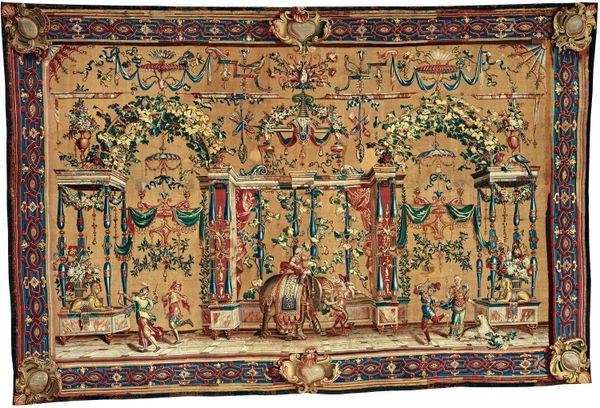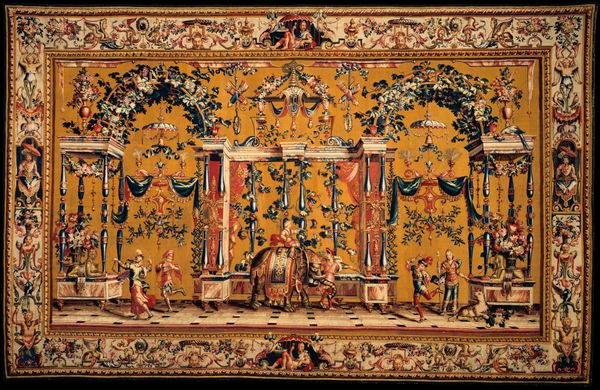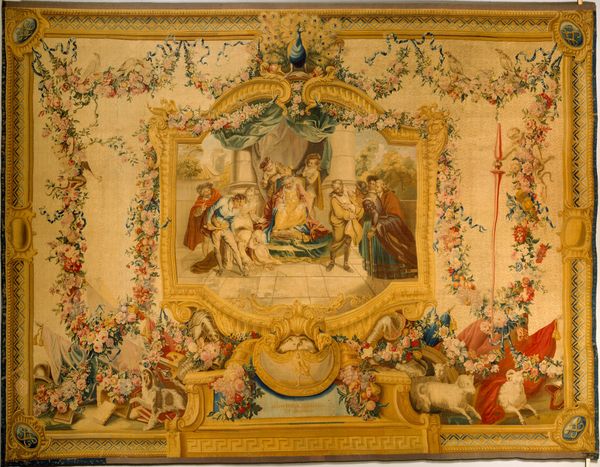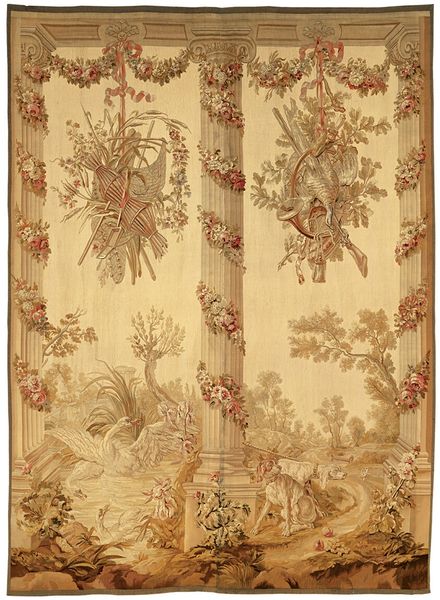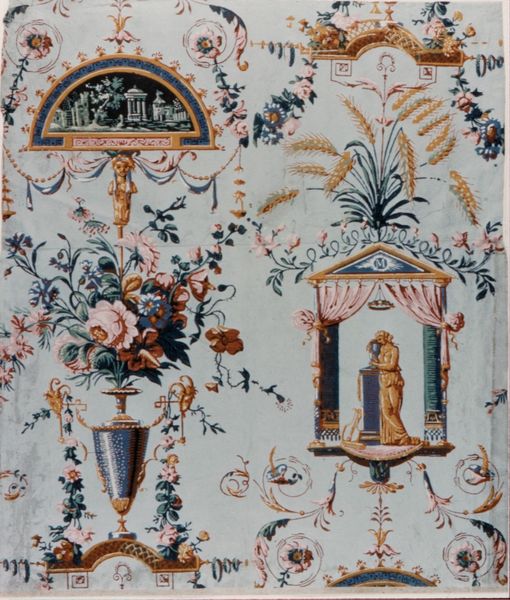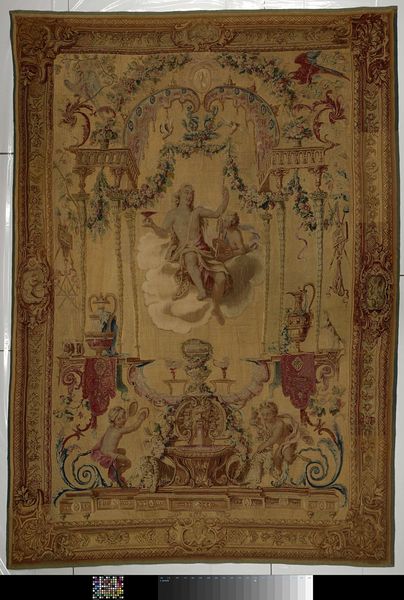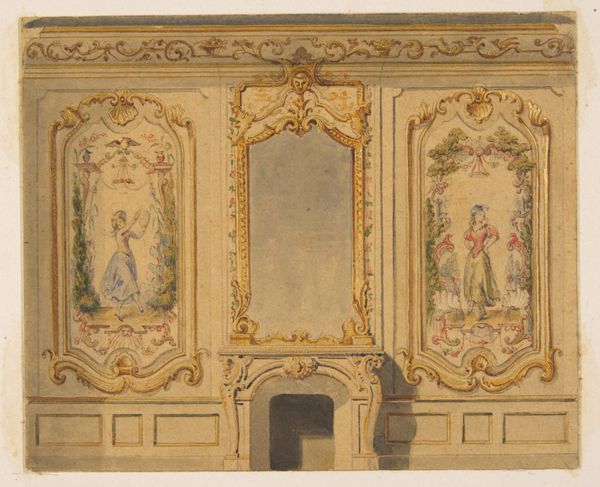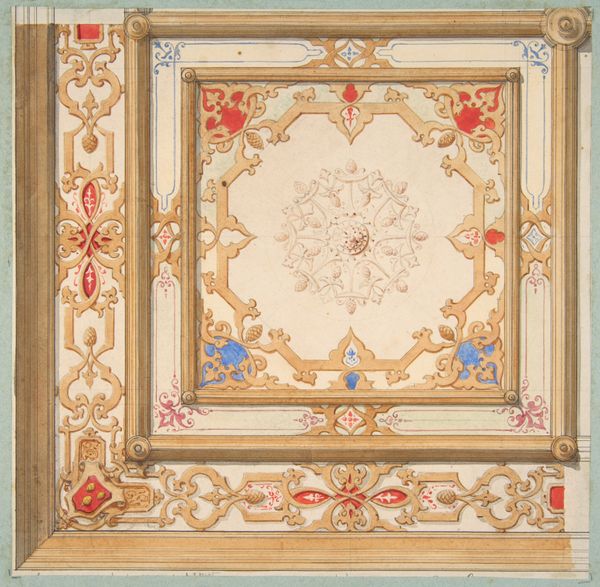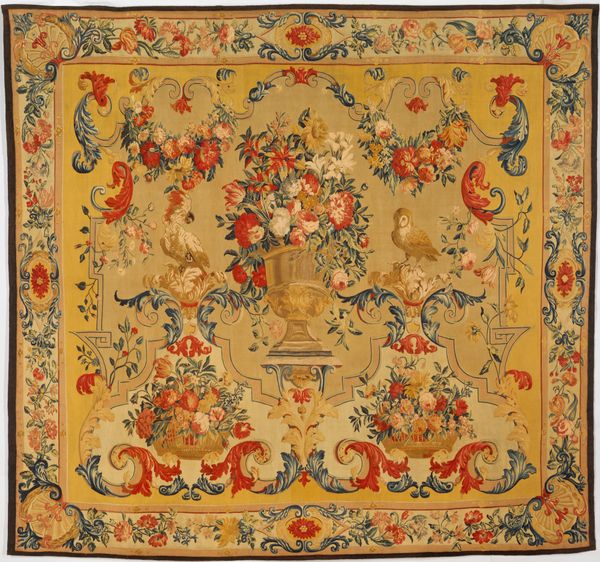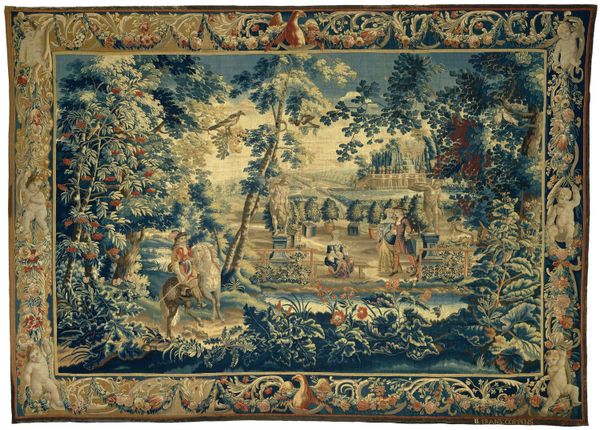
silk, weaving, textile
#
allegory
#
baroque
#
silk
#
weaving
#
landscape
#
textile
#
oil painting
#
genre-painting
Dimensions: 115 1/2 x 194 1/4 in. (293.37 x 493.4 cm)
Copyright: Public Domain
This tapestry, "The Camel," was created by Jean-Baptiste Monnoyer. The camel, front and center, immediately invites consideration. In Western art, the camel often symbolizes the exotic Orient, evoking tales of faraway lands and prosperous trade routes. It hearkens back to the biblical story of the Magi, bearing gifts, and symbolizes the cultural exchange between East and West. One can trace the camel’s symbolic journey through art history: from ancient Egyptian hieroglyphs, where it represented transportation and trade, to Renaissance paintings, where it became a signifier of wealth and foreign allure. Over time, the image of the camel has been interwoven with ideas of longing and the subconscious desire to connect with faraway and different places. Such symbols tap into our collective memory, engaging us on a deeper emotional level. These symbols resurface, evolve, and take on new meanings, weaving a complex tapestry of cultural understanding.
Comments
minneapolisinstituteofart almost 2 years ago
⋮
An Eastern king enjoys musical entertainment while exotic marvels are presented to him—peacocks, leopards, rope-walking acrobats, and a camel. While not an accurate depiction of Eastern culture, this tapestry is a truthful representation of Western fascination with the lands beyond the borders of Europe. This tapestry is an example of a style of composition known in the 1600s as “grotesque.” Grotesque scenes incorporated fanciful combinations of strange characters and imaginary hybrid creatures intended to delight the viewer. The disparate elements were unified by a symmetrical design of slender architectural features and scrolling ribbons and vines that seem illogically suspended in midair or applied to a flat surface.
Join the conversation
Join millions of artists and users on Artera today and experience the ultimate creative platform.
